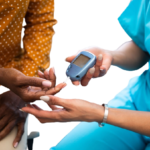The world raises awareness about HIV/AIDS every first of December. The focus for this year is on ending inequalities that pose as obstacles to the termination of the AIDS “pandemic (UNAIDS)”
In a bid to raise more awareness and provide further education concerning HIV/AIDS, here are some facts about the infection –
- HIV/AIDS no de show for face
- Mos people infected with HIV do not know that they have become infected. However, some people may experience glandular fever-like illness with fever, rash, joint pains and enlarged lymph nodes) immediately after the infection
- The term AIDS applies to the most advanced stages of HIV infection.
- The majority of people infected with HIV, if not treated, develop signs of AIDS within eight to 10 years.
- HIV is transmitted through penetrative (anal or vaginal) sex, blood transfusion, the sharing of contaminated sharp objects including needles in health-care settings and drug injection and between mother and infant during pregnancy, childbirth and breastfeeding.
How can HIV infection be prevented?
Sexual transmission of HIV can be prevented by:
- Monogamous relations between uninfected partners.
- Non-penetrative sex.
- Consistent and correct use of male or female condoms
- Antiretroviral (ARV) therapy in the case of sex between an infected and an uninfected person (ARV can result in an undetectable viral load in infected persons
- Pre-exposure prophylaxis taken by people who are not infected with HIV.
- Voluntary Medical Male Circumcision reduces the chances of men acquiring HIV from women. However, circumcision is not a magic bullet. Circumcised men can still become infected by and infect their sexual partner
- Additional ways to avoid infection:
- If you are an injecting drug user, always use new needles and syringes that are disposable or that have been properly sterilized before reuse
- Ensure that blood and blood products are tested for HIV, and that blood safety standards are implemented.
- Pregnant mothers living with HIV/AIDS should not only begin antenatal care on time, but follow through with every medical instruction given by their caregiver.
There is no known cure for HIV yet. However, there is effective treatment, which, if started promptly and taken regularly, results in a quality and long life for someone living with HIV (similar to that expected in the absence of the infection).
Go for HIV/AIDS testing and counseling now, to be on the safe side.



